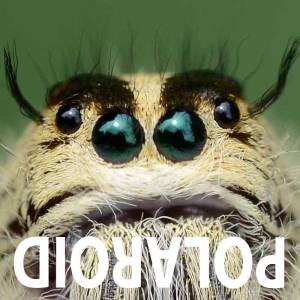Golden orb spiders dancing
Spider week - day 3
I have talked the golden orb weaver spider several times here on blip. I cannot help it, the GOW is by far my favorite bug. Its shear size, big enough to steal a chip of your plate, striking wasp like colors, strike fear into the heart of anyone who sees it up close for the first time.
It takes its name not from its own livery, but rather the golden hue of its extraordinarily large and strong web material. Wiki quotes 2 meters, but I have actually seen a web more like 5 meters span. The Brunel of the arachnid world, the web is strong enough that you can shake the bush it is hung from without breaking the web, certainly strong enough to survive most rainstorms. The web has even been harvested to make garments, but the numbers make it impractical, requiring the web of a million female spiders to make one scarf.
The main web support string is floated out on a light breeze from a high vantage point, until it catches on another bush. This string is then reinforced maybe a hundred times or more, giving it great strength. More support lines are run to lower points on the bushes. A main lattice is then woven as a structural frame. The sticky silk is then laid between this non-sticky frame, the globules of glue can be seen on a few of the folio images and are often mistaken for dew. The whole structure works a bit like a suspension bridge and is probably another example of human endeavor inspired by nature.
The GOW spider builds one web and keeps it repaired for the duration of the season. Unfortunately from a photographers point of view, the web is usually out of reach, as any attempt to build its web in an accessible spot quickly results in someone sweeping it away with a stick.
I have found three types of GOW spider: The standard female is yellow and black stripes, black legs with yellow knees. I found a black bodied GOW female with red legs and black knees. Thirdly, the spider featured today, a mottled yellow/orange bodied female with red legs and yellow and black knees, pretty much a cross between the other two. I suspect that inter breeding occurs between all three sub-species.
This arachnid differs from yesterday's contribution in that the female is massive compared to the diminutive male, which is always an orange/red color, with red legs fading to black tips. I have seen as many as three males living on the females web, feeding on the smaller trapped insects that the female is not interested in. Looking at the relative size between the sexes, I would estimate a difference in mass of about 500x, a bit like a seven stone weakling taking on an angry mammoth!
It seems this size defense mechanism of the male is quite successful, as the female does not flinch as the male negotiates the mountainous female's body, to perform his ritual dance before mating. Unfortunately I was unable to get any clearer photos than this, as the spiders were five feet away from my focal plane, the other side of the web was hanging over a fifty foot drop. I was doing a Houdini, balancing on top of a pile of rocks just to get this image!
Despite the immense size and rather dangerous looking livery, this arachnid is not deadly. All spiders are poisonous, but the toxicity of this spider is about that of a bee sting. Personally, I would be more wary of yesterday's spider with its extraordinarily long chelicerae and fangs, about twice the length of golden orb weavers fangs and yet the stick spider only had a skinny body length of around an inch.
I have put a selection a GOW spider images in folio for those of you interested in seeing more.
Dave
- 15
- 3
- Nikon D7000
- f/8.0
- 105mm
- 250

Comments
Sign in or get an account to comment.


